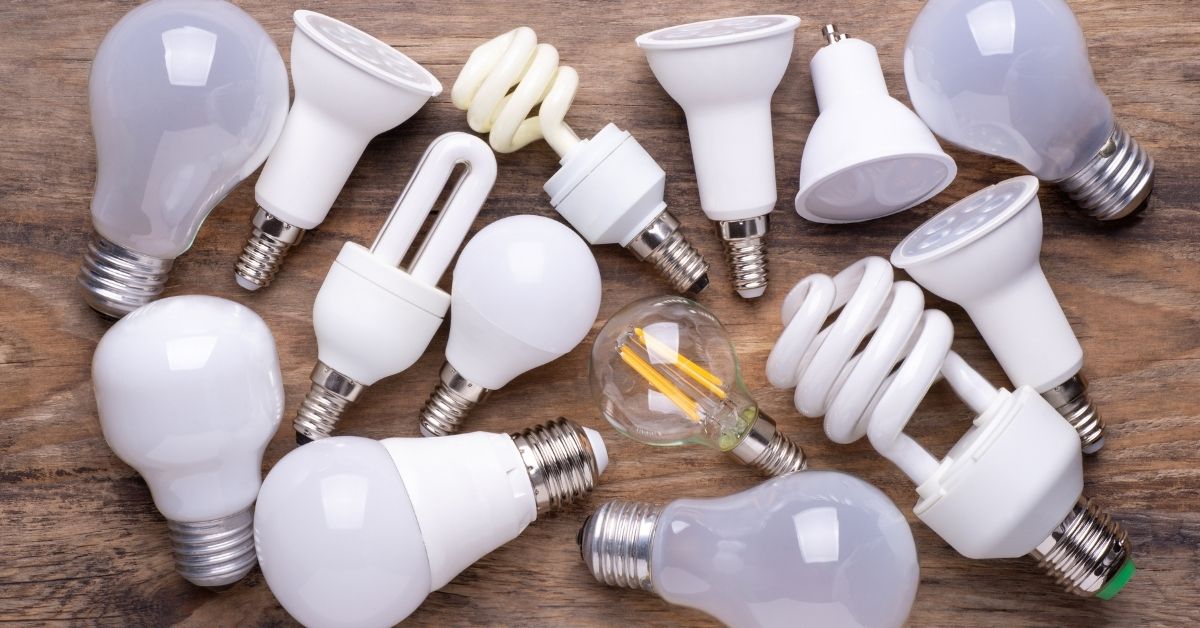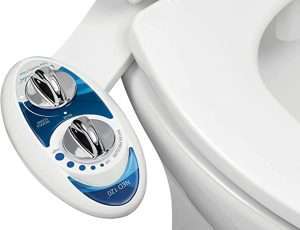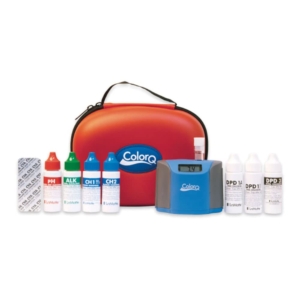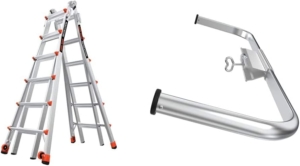The Brightest Light Bulb:
Choosing the Right Option for Your Needs

Light bulbs are a fundamental part of our lives. They light up our homes, offices, and public spaces. But not all bulbs are created equal. Some shine brighter than others. That’s where the brightest light bulb comes into the picture. This article will delve into the world of light bulbs, focusing on the brightest ones available on the market. It will explore different types of light bulbs, how they work, and which ones provide the most light. Whether you’re looking for a strong light source for your workspace or simply want to brighten up your home, this guide will help you make the best choice.
What Makes a Light Bulb Bright?
Light bulbs are an essential part of our daily lives, providing us with the illumination we need to navigate our surroundings. But have you ever wondered what makes a light bulb bright? In this section, we will delve into the factors that contribute to the brightness of a light bulb, including wattage and lumens, as well as explore the different types of light bulbs available.
Wattage and Lumens Explained
When it comes to measuring the brightness of a light bulb, two terms often come into play: wattage and lumens. Understanding the difference between these two concepts helps in determining the brightness level you need for your specific lighting requirements.
Wattage refers to the amount of power consumed by a light bulb. In the past, wattage was commonly used as an indicator of brightness. However, with the advent of energy-efficient lighting technologies, such as LED bulbs, wattage no longer directly correlates with brightness. Nowadays, lower wattage bulbs can provide the same or even greater brightness compared to higher wattage bulbs.
Lumens, on the other hand, are a more accurate measure of a light bulb’s brightness. Lumens represent the total amount of visible light emitted by a bulb. The higher the number of lumens, the brighter the light bulb will be. To put it into perspective, a traditional 60-watt incandescent bulb typically produces around 800 lumens, while an LED bulb with the same brightness can consume as little as 8-12 watts.
Different Types of Light Bulbs
Now that we understand the relationship between wattage, lumens, and brightness, let’s explore the different types of light bulbs available in the market. Each type has its own unique characteristics, making it suitable for various lighting applications.
- Incandescent Bulbs: These are the classic light bulbs that have been around for decades. Incandescent bulbs work by passing an electric current through a filament, which then emits light. While they are less energy-efficient compared to newer technologies, they still provide a warm, familiar glow.
- Halogen Bulbs: Halogen bulbs are an improved version of incandescent bulbs. They use a halogen gas filling and a tungsten filament, resulting in a brighter and longer-lasting light source. Halogen bulbs are commonly used in track lighting, recessed fixtures, and task lighting.
- Fluorescent Bulbs: Fluorescent bulbs are known for their energy efficiency and long lifespan. These bulbs work by passing an electric current through a tube filled with mercury vapor and phosphor coating, which produces ultraviolet light. The ultraviolet light then reacts with the phosphor coating, creating visible light.
- LED Bulbs: LED (Light Emitting Diode) bulbs have gained immense popularity in recent years due to their energy efficiency, long lifespan, and versatility. LED bulbs produce light by passing an electric current through a semiconductor material, which emits photons. They are available in various shapes, sizes, and color temperatures, making them suitable for a wide range of lighting applications.
- CFL Bulbs: CFL (Compact Fluorescent Lamp) bulbs are a more compact version of fluorescent bulbs. They are known for their energy efficiency and longevity. CFL bulbs contain mercury vapor and phosphor coating, similar to fluorescent bulbs, but in a more compact design.
Each type of light bulb has its advantages and disadvantages, and choosing the right one depends on factors such as brightness requirements, energy efficiency, lifespan, and personal preferences.
The Brightest Light Bulb Options
When it comes to choosing the brightest light bulb, you have a few options to consider. Each type of bulb has its own unique characteristics and advantages. In this section, we will explore the different options available and help you make an informed decision.
LED Light Bulbs
LED (Light Emitting Diode) light bulbs have gained popularity in recent years due to their energy efficiency and long lifespan. These bulbs produce a bright, focused light that illuminates a room effectively. LED bulbs are available in various color temperatures, from warm white to cool white, allowing you to choose the right ambiance for your space.
One of the notable features of LED bulbs is their ability to provide directional lighting. This means that the light is focused in a specific direction, reducing wasted light and enhancing brightness. LED bulbs are also known for their durability, making them a cost-effective lighting option in the long run.
Halogen Light Bulbs
Halogen light bulbs are another bright lighting option worth considering. These bulbs contain halogen gas, which helps increase their brightness and lifespan. Halogen bulbs emit a warm, white light that closely resembles natural daylight, making them ideal for task lighting or areas where you need clarity and visibility.
One advantage of halogen bulbs is their instant brightness. Unlike some other types of bulbs, halogens reach their full brightness immediately after being turned on. This can be particularly useful in spaces where you need immediate illumination. However, it’s important to note that halogen bulbs can get hot during operation, so caution must be taken when handling them.
Compact Fluorescent Light Bulbs
Compact Fluorescent Light Bulbs (CFLs) are known for their energy efficiency and brightness. While they may not be as bright as LED or halogen bulbs, CFLs still provide ample illumination for most applications. These bulbs emit a soft, white light that is suitable for general lighting purposes.
One of the benefits of CFLs is their long lifespan, making them a cost-effective option in the long term. They are also relatively affordable compared to some other types of bulbs. However, it’s important to note that CFLs contain a small amount of mercury, so proper disposal is necessary to minimize environmental impact.
Incandescent Light Bulbs
Incandescent light bulbs have been a popular lighting choice for many years, known for their warm and cozy glow. While they are not as energy-efficient as LED or CFL bulbs, incandescent bulbs still offer a bright light output. These bulbs are available in various wattages, allowing you to choose the level of brightness that suits your needs.
One advantage of incandescent bulbs is their ability to render colors accurately. They provide a high Color Rendering Index (CRI), making them a preferred choice in spaces where color accuracy is important, such as art studios or retail stores. However, it’s important to note that incandescent bulbs have a shorter lifespan compared to LED or CFL bulbs.
Factors to Consider When Choosing the Brightest Light Bulb
When it comes to selecting the brightest light bulb for your needs, there are several factors to consider. Each of these factors plays a role in determining the overall performance and quality of the light emitted by the bulb. In this section, we will explore the key considerations: Energy Efficiency, Lifespan, Color Temperature, and Dimmable Options.
Energy Efficiency
One of the most important factors to consider when choosing a light bulb is its energy efficiency. Energy-efficient bulbs not only help reduce your carbon footprint but also save you money on your electricity bills. Look for bulbs with the Energy Star certification, as these bulbs meet strict efficiency standards set by the U.S. Environmental Protection Agency (EPA).
LED (Light Emitting Diode) bulbs are known for their exceptional energy efficiency. They consume significantly less energy than traditional incandescent bulbs, making them an eco-friendly choice. Additionally, LED bulbs have a longer lifespan, reducing the need for frequent replacements. So, when searching for the brightest light bulb, prioritize energy efficiency for both environmental and economic benefits.
Lifespan
Another factor to consider is the lifespan of the light bulb. The longevity of a bulb determines how often you’ll need to replace it, saving you time, effort, and money in the long run. LED bulbs once again take the lead in this aspect. On average, LED bulbs can last up to 25,000 to 50,000 hours, whereas incandescent bulbs typically last only about 1,000 hours.
By choosing a light bulb with a longer lifespan, you ensure that your space remains well-lit for an extended period without the hassle of frequent replacements. This is especially important for areas that require constant illumination, such as kitchens, offices, or outdoor lighting.
Color Temperature
Color temperature refers to the appearance of light emitted by a bulb. It is measured in Kelvin (K). Understanding color temperature is essential as it directly affects the ambiance and mood of a room. Different color temperatures are suitable for different spaces and purposes.
For bright and vibrant lighting, opt for bulbs with a higher color temperature (5000K-6500K). These bulbs emit a cool white light that is ideal for task-oriented areas like offices or workspaces. For a warmer and more cozy atmosphere, bulbs with lower color temperatures (2700K-3000K) are preferable. These bulbs emit a soft white or warm yellow light, which is perfect for living rooms, bedrooms, and dining areas.
Consider the desired ambiance and the function of the space when selecting the color temperature of your brightest light bulb.
Dimmable Options
If you desire greater control over the brightness of your lighting, choosing a dimmable bulb is a wise decision. Dimmable bulbs allow you to adjust the intensity of the light to create the perfect ambiance for any occasion. Whether you want a bright and energetic environment or a soft and relaxing atmosphere, dimmable bulbs provide the flexibility to cater to your needs.
When purchasing a dimmable bulb, ensure that it is compatible with your existing dimmer switch or purchase a dimmer switch that is compatible with the bulb. This will ensure smooth and seamless dimming functionality.
By considering these factors – energy efficiency, lifespan, color temperature, and dimmable options – you can make an informed decision when choosing the brightest light bulb for your space. Remember to prioritize your specific needs and preferences to create the perfect lighting environment that suits your lifestyle.
Tips for Maximizing the Brightness of Light Bulbs
When it comes to lighting up our homes or workspaces, we all want to achieve the brightest and most illuminating atmosphere possible. The brightness of a light bulb can greatly affect the mood and functionality of a room. In this section, we will explore some valuable tips to help you maximize the brightness of your light bulbs. By implementing proper fixture placement, cleaning and maintenance techniques, as well as utilizing reflective surfaces, you can enhance the luminosity of your space.
Proper Fixture Placement
One factor in maximizing the brightness of light bulbs is the proper placement of fixtures. The position of the light source plays a significant role in how effectively it illuminates a room. Here are a few tips to consider:
- Directionality: Ensure that the light fixture is directed towards the area that needs the most illumination. For example, if you are working at a desk, position the light source above or behind you to avoid casting shadows on your work surface.
- Height: Adjust the height of the fixture based on the room’s ceiling height and the desired lighting effect. Lower ceiling heights may require recessed lighting or flush-mount fixtures to distribute light evenly.
- Spacing: When using multiple light fixtures, space them evenly throughout the room to provide consistent brightness. Avoid clustering them in one area, as this can create uneven lighting patterns.
Cleaning and Maintenance
Regular cleaning and maintenance of your light bulbs and fixtures are essential for maximizing their brightness. Over time, dust, dirt, and grime can accumulate, reducing the amount of light they emit. Here are some tips to keep your light bulbs shining brightly:
- Turn off the Power: Before cleaning any light fixture, always ensure that the power is switched off to prevent accidents.
- Dust Removal: Use a soft microfiber cloth or a feather duster to gently remove dust from the surface of the light bulbs and fixtures. Avoid using abrasive materials that could scratch or damage the bulbs.
- Cleaning Solutions: For stubborn stains or dirt buildup, you can use a mild detergent mixed with water. Dip a cloth into the solution, wring it out, and carefully wipe the affected areas. Remember to dry the fixtures thoroughly afterward.
- Replace Old Bulbs: Over time, light bulbs can lose their brightness and become less efficient. Consider replacing old bulbs with newer, more energy-efficient options to maintain optimal brightness.
Using Reflective Surfaces
Another effective technique for maximizing the brightness of your light bulbs is to strategically use reflective surfaces. These surfaces bounce light around the room, amplifying its overall brightness. Here are some ideas to incorporate reflective surfaces into your lighting setup:
- Mirrors: Position mirrors opposite light sources to reflect and disperse light throughout the room. This not only enhances brightness but also creates a sense of spaciousness.
- Metallic Finishes: Choose light fixtures with metallic finishes or accents, such as chrome or brass. These reflective surfaces help bounce light off the fixtures, increasing brightness.
- White Walls and Ceilings: Paint your walls and ceilings in light, neutral colors, preferably white. These surfaces act as natural reflectors, diffusing light and creating a brighter overall ambiance.
Remember, the key to maximizing the brightness of your light bulbs lies in proper fixture placement, regular cleaning and maintenance, and strategic use of reflective surfaces. By implementing these tips, you can create a well-lit and inviting space that meets your lighting needs. Stay tuned for more insightful tips in the upcoming sections to further enhance your lighting experience.
Conclusion
Finding the brightest light bulb for your needs can greatly improve the lighting in your space. By considering factors such as lumens, wattage, and color temperature, you can select a bulb that provides optimal brightness and energy efficiency. LED bulbs are a popular choice due to their long lifespan and low energy consumption. Additionally, dimmable options offer versatility in adjusting the brightness level to suit different activities or moods. Don’t forget to check the packaging for the Lighting Facts label, which provides essential information about the bulb’s performance. With the right research and understanding, you can find the perfect light bulb to brighten up your space while saving energy and money in the long run.






